
Pest: Slugs and Snails
Pest/disease identification and lifecycle, most common damage symptoms and crops affected:
Land slugs and snails are closely related mollusks, known together as “gastropods,” the primary difference between them being that snails have external spiraling shells. There are over 90 terrestrial gastropods found in Maine. The gray garden slug is most common and most destructive on the East Coast (fig. 1). Leopard slugs are more common on Maine’s coast and islands, though they are becoming more common inland over time. The tawny garden slug is less common, but still an important agricultural pest (fig. 2). Interestingly, all three of these key pest species are native to southern Europe.
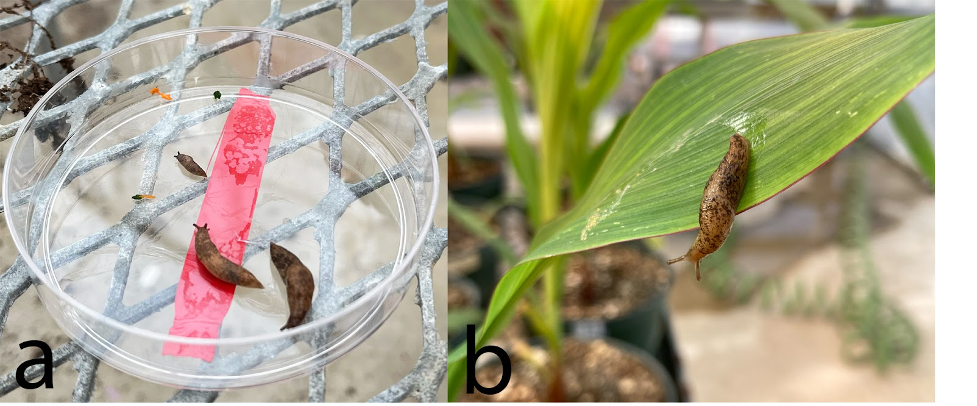
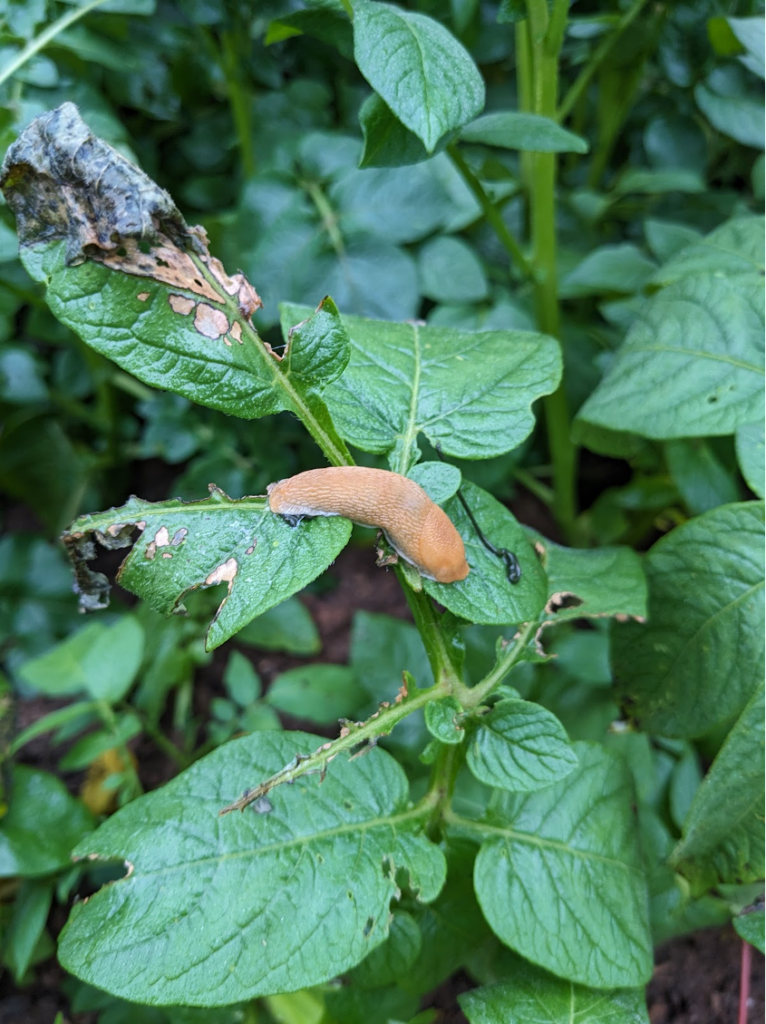
Snails and slugs thrive in damp, shaded, cool environments and are most active on wet and overcast days, or at night. In Maine, most slugs and snails overwinter as eggs and as adults, emerging at 32-40 F. All slugs and snails are hermaphrodites, so mating can happen between any two individuals of the same species. The eggs of gray garden slugs can take up to 100 days to hatch in cooler weather, but only 10 days in late May to early June (fig. 3). In damp, warm weather, gray garden slugs can complete their life cycle in less than three months and lay approximately 100 eggs.
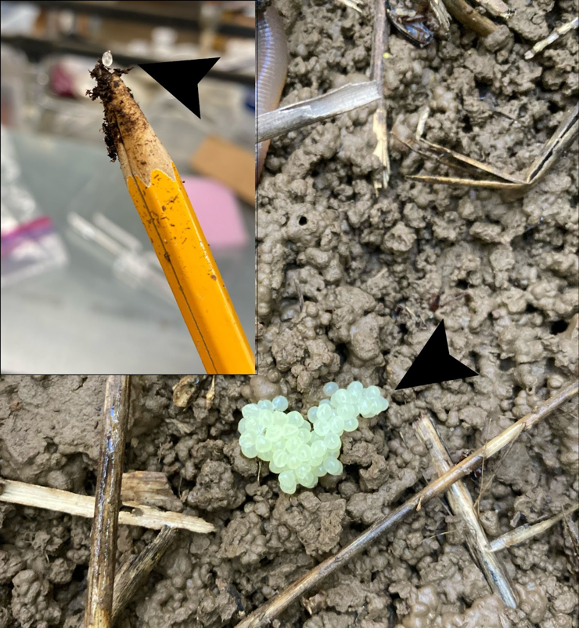
Slugs and snails feed on a wide variety of plants and crops including: seedlings, leafy greens, ripening fruits that are close to the ground such as strawberries and tomatoes, and mushrooms. Of particular interest to slugs are any plants or plant parts that are especially tender, but they usually don’t do too much damage on more mature and fibrous growth. Slugs and snails feed by scraping leaves, fruits and flowers with their rasp-like tongues, leaving tell-tale irregular holes with smooth edges (fig. 4).
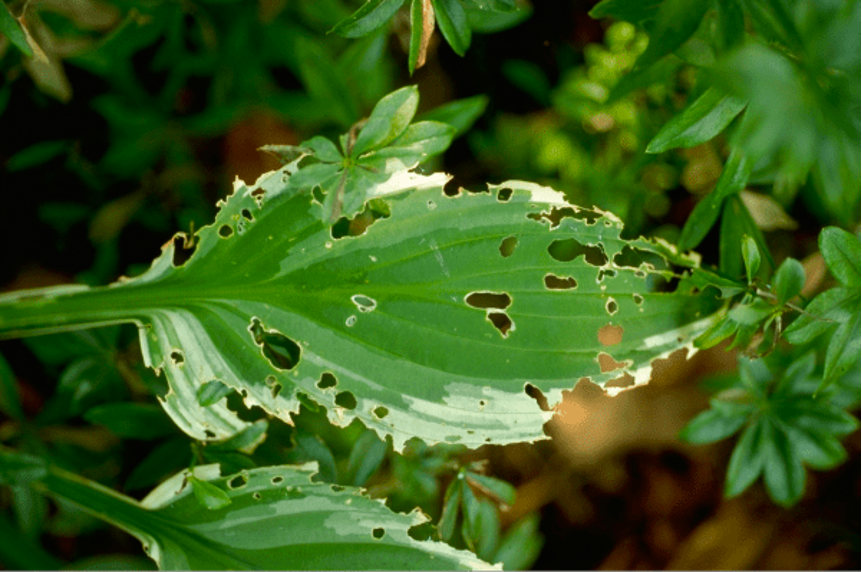
Management options:
Slugs and snails differ from many other pests in that many of the most immediately effective management tactics happen to be approved for use in organic systems!
Scouting:
Slugs and snails use a muscular “foot” to glide over the ground, leaving shiny slime trails behind them. These silvery trails are an excellent sign of recent slug or snail presence (fig. 5). Signs of feeding damage are also important to look for, though those signs can be confused with other pests (fig. 4). Slug eggs are another sign that slugs are nearby (fig. 3). In warm, wet years, it’s particularly important to keep an eye out for signs of slug damage.
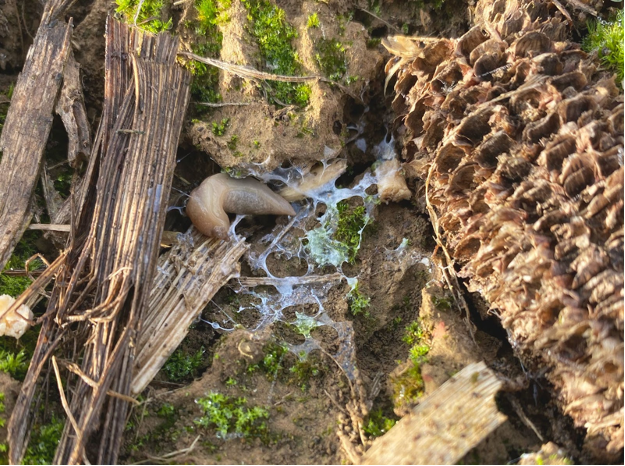
Cultural options:
The first step, as with many pests and diseases, is good sanitation. Because slugs and snails require moisture, it’s important to clear out any damp, dark habitats near your crops by removing boards, rocks, logs and dense growth that slugs may hide or lay eggs under. Where possible, improving drainage to allow soil to dry out between rain events can also reduce the number of eggs that successfully hatch.
There are two primary strategies to deal with slugs and snails — creating barriers to keep them out of a crop, and managing the slugs and snails that are already in your fields and gardens.
So long as barriers at perimeters of crops are complete and well-maintained, they can be an effective choice, especially for smaller fields and gardens.
Copper foil, mesh or tape wrapped around garden beds, etc., will stop slugs and snails from crossing because the copper oxidizes when it comes in contact with their slime, which gives them a slight shock. When copper is tarnished, the oxidation reaction has already happened, so it can’t affect the slugs. When copper barriers tarnish, wipe them down with vinegar to regain efficacy. Any copper barrier should be at least 2 inches wide, as slugs and snails will be more likely to cross a narrower barrier.
Diatomaceous earth has also been shown to be an effective barrier, especially when laid liberally (e.g., in at least 1-inch thick bands). However, diatomaceous earth becomes less effective when wet, and works best in settings protected from rain, or should be reapplied regularly. Diatomaceous earth, while smooth to the touch to us, works because the particles have microscopic sharp edges, and the powder can absorb protective oils from slug skin, causing them to dry out. Both of those properties are impaired after wetting, even if only from repeated heavy dews.
Simply maintaining a bare cultivated perimeter around your garden may also deter slugs and snails from entering. Unfortunately, slugs and snails are most problematic when it’s been rainy, limiting the efficacy of any barrier approach in particularly wet years. With any barrier approach, maintenance is critical to ensure a complete perimeter exists, as new plant growth, blowing leaves, etc., can create safe passage for slugs and snails over a barrier.
To manage slugs and snails that are already inside of fields and garden beds, many home growers report success with trapping and drowning slugs. To trap slugs, dig a small hole away from your field and place a cup in it so that it rests just above the soil. Fill the cup with beer (choose inexpensive light lagers — a slug research lab at Penn State recommends Keystone Light as consistently proving to be a slug favorite in their testing), or with water, a pinch of baker’s yeast and a drop of dish soap. Check the traps every morning, and replace them as needed. Commercial farmers should consider whether any remedy not registered for use in commercial settings is allowed under Board of Pesticide Control regulations.
Pesticides approved for use in certified organic production (as a last resort):
Another option to control slugs and snails already in fields and gardens is to use iron phosphate bait products, such as Sluggo, which have been shown to be as or more effective as conventional pesticides. Iron phosphate based baits work by stopping slugs and snails from feeding, so do not be surprised to find slugs and snails present for two to three days after application, though they should stop causing new feeding damage after consuming the baits. Slug and snail baits are most effective while employing many of the options above in order to achieve full control and limit reintroduction of other slugs and snails from surrounding areas.
Please note: This information is for educational purposes. Any reference to commercial products, trade or brand names is for information only, and no endorsement or approval is intended. Pesticide registration status, approval for use in organic production and other aspects of labeling may change after the date of this writing. It is always best practice to check on a pesticide’s registration status with your state’s board of pesticide control, and for certified organic commercial producers to update their certification specialist if they are planning to use a material that is not already listed on their organic system plan. The use of any pesticide material, even those approved for use in organic production, carries risk — be sure to read and follow all label instructions. The label is the law. Pesticides labeled for home garden use are often not allowed for use in commercial production unless stated as such on the label.
Authors
Written by Mariam Taleb and Caleb Goossen
Source material
Dill, James F. and Clay A. Kirby. 2020. “Pest Management Fact Sheet #5036.” University of Maine Cooperative Extension. https://extension.umaine.edu/ipm/ipddl/publications/5036e/
Willen, Cheryl A. and Mary Louse Flint. 2018. “Slugs and Snails” University of California Statewide Integrated Pest Management Program. https://ipm.ucanr.edu/PMG/PESTNOTES/pn7427.html
